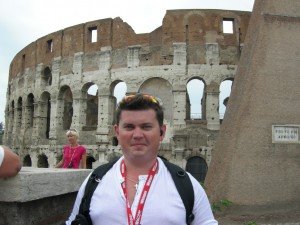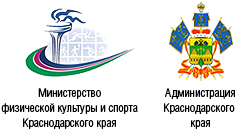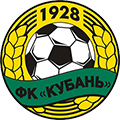Римини (футбольный клуб). Римини футбол
Римини (футбольный клуб) Википедия
 Римини Римини | |||
 | |||
| Associazione Calcio Rimini 1912 | |||
| Бело-красные | |||
| 1912 | |||
| «Ромео Нери» | |||
| 9 768 | |||
 Биажио Амати Биажио Амати | |||
 Лука Д'Анжело Лука Д'Анжело | |||
| riminicalcio.com | |||
| Второй дивизион Профессиональной лиги | |||
| плей-офф | |||
| |||
«Римини» (итал. Associazione Calcio Rimini 1912) — итальянский футбольный клуб из города Римини, выступающий в Серии C. Основан в 1912 году. Домашние матчи проводит на стадионе «Ромео Нери», вмещающем 9 768 зрителей. Наивысшим достижением клуба в Серии B стало 5 место в сезоне 2006/2007.
Содержание
- 1 История
- 2 Достижения
- 3 Известные игроки
- 4 Известные тренеры
- 5 Ссылки
История
Достижения
Серия C: (2)
- Победитель: 1975-76, 2004-05
Известные игроки
 Маттео Бриги
Маттео Бриги Серджо Флоккари
Серджо Флоккари Самир Ханданович
Самир Ханданович
 Алессандро Матри
Алессандро Матри Кристиано Дони
Кристиано Дони Златан Муслимович
Златан Муслимович Игор Протти
Игор Протти Фернандо Де Наполи
Фернандо Де Наполи Томас Манфредини
Томас Манфредини Хулио Либонатти
Хулио Либонатти Сорин Параскив
Сорин Параскив Дигао
Дигао
Известные тренеры
 Эленио Эррера
Эленио Эррера
Ссылки
- Официальный сайт
 | Это заготовка статьи о футбольной команде. Вы можете помочь проекту, дополнив её. |
|
|
wikiredia.ru
Римини (футбольный клуб) - WikiVisually
1. Чемпионат Италии по футболу (Серия D) – Serie D is the top level of the Italian non-professional football association called Lega Nazionale Dilettanti. The association represents over twelve thousand football players and four hundred football teams across Italy, Serie D ranks just below Lega Pro, and is thus considered the 4th ranked league in the country. It is organized by the Roman Comitato Interregionale, a league in the league inside the LND and it chose the winners and a few runners-up from the 36 Serie C championships to be added to the new third division set up into 4 groups. The rest of the attended the new Promozione which changed name in 1952 into Quarta Serie. From 1959 each player attending the Serie D championships had to opt for semi-professional status by signing a specially issued status attribution form, the championship was so included in the Lega Nazionale Semiprofessionisti, today known as Lega Pro. The championship consequently passed into the Lega Nazionale Dilettanti, from 1992 to 1999 had the name changed into Campionato Nazionale Dilettanti before eventually returning to the current Serie D name. Since the early 1990s, Serie D has consisted of 162 teams split into 9 regional divisions, usually formed of 18 teams each divided geographically. For the 2012–13 season, the teams were 166 and two groups were formed of 20 teams, in the 2013–14 season the number was 161, for 2014–15 their distribution by region is as follows, Girone A - teams from Aosta Valley, Piedmont, Liguria & Lombardy. Girone B - teams from Lombardy & Veneto, Girone C - teams from Friuli-Venezia Giulia, Trentino-Alto Adige/Südtirol & Veneto. Girone D - teams from Emilia-Romagna, Tuscany & Veneto, Girone E - teams from Lazio, Tuscany & Umbria. Girone F - teams from Abruzzo, Lazio, Marche & Molise, Girone G - teams from Lazio & Sardinia. Girone H - teams from Apulia, Basilicata & Campania, Girone I - teams from Calabria, Campania & Sicily. The first-placed team from each division is promoted to Lega Pro each year, if a newly promoted Serie D team fails to meet the requirements, Lega Pro asks the second-placed team in that Serie D teams division to fill the vacancy. Failing that, even the team may fill the vacancy. In recent years, one or more teams from the senior leagues from Serie A down to Lega Pro Seconda Divisione failed to meet the regulatory or financial requirements to remain there and these vacancies were usually announced in the summer rest period as the new season was being organized. As teams moved up to fill the void created by these failed teams, for example, in the 2007-08 season there were nine such failures, and thus, nine Lega Pro Seconda Divisione spaces were created. Four of those spaces were filled by calling back teams that had played in Seconda Divisione but were relegated to Serie D for the next season, the other five vacancies were filled by Serie D teams that had participated in the Serie D playoffs. Playoffs are held after the season is over and involve teams placed second through fifth in each division
2. Футбольная форма – In association football, kit is the standard equipment and attire worn by players. The sports Laws of the Game specify the minimum kit which a player must use, footballers generally wear identifying numbers on the backs of their shirts. Professional clubs also usually display players surnames or nicknames on their shirts, Football kit has evolved significantly since the early days of the sport when players typically wore thick cotton shirts, knickerbockers and heavy rigid leather boots. The Laws of the Game set out the equipment which must be worn by all players in Law 4. Five separate items are specified, shirt, shorts, socks, footwear, goalkeepers are allowed to wear tracksuit bottoms instead of shorts. While most players wear studded football boots, the Laws do not specify that these are required, shirts must have sleeves, and goalkeepers must wear shirts which are easily distinguishable from all other players and the match officials. Thermal undershorts may be worn, but must be the colour as the shorts themselves. Shin pads must be covered entirely by the stockings, be made of rubber, plastic or a similar material, and provide a reasonable degree of protection. The only other restriction on equipment defined in the Laws of the Game is the requirement that a player must not use equipment or wear anything that is dangerous to himself or another player. In the event of a match between teams who would wear identical or similar colours the away team must change to a different colour. The England national team plays in red shirts even when it is not required. Many professional clubs also have a kit, ostensibly to be used if both their first-choice and away colours are deemed too similar to those of an opponent. Most professional clubs have retained the basic colour scheme for several decades. Teams representing countries in international competition generally wear national colours in common with other sporting teams of the same nation, shirts are normally made of a polyester mesh, which does not trap the sweat and body heat in the same way as a shirt made of a natural fibre. Depending on local rules, there may be restrictions on how large these logos may be or on what logos may be displayed, competitions such as the Premier League may also require players to wear patches on their sleeves depicting the logo of the competition. The captain of team is usually required to wear an elasticated armband around the left sleeve to identify him as the captain to the referee. Most current players wear specialist football boots, which can be either of leather or a synthetic material. Modern boots are cut slightly below the ankles, as opposed to the high-ankled boots used in former times, studs may be either moulded directly to the sole or be detachable, normally by means of a screw thread
3. Италия – Italy, officially the Italian Republic, is a unitary parliamentary republic in Europe. Located in the heart of the Mediterranean Sea, Italy shares open land borders with France, Switzerland, Austria, Slovenia, San Marino, Italy covers an area of 301,338 km2 and has a largely temperate seasonal climate and Mediterranean climate. Due to its shape, it is referred to in Italy as lo Stivale. With 61 million inhabitants, it is the fourth most populous EU member state, the Italic tribe known as the Latins formed the Roman Kingdom, which eventually became a republic that conquered and assimilated other nearby civilisations. The legacy of the Roman Empire is widespread and can be observed in the distribution of civilian law, republican governments, Christianity. The Renaissance began in Italy and spread to the rest of Europe, bringing a renewed interest in humanism, science, exploration, Italian culture flourished at this time, producing famous scholars, artists and polymaths such as Leonardo da Vinci, Galileo, Michelangelo and Machiavelli. The weakened sovereigns soon fell victim to conquest by European powers such as France, Spain and Austria. Despite being one of the victors in World War I, Italy entered a period of economic crisis and social turmoil. The subsequent participation in World War II on the Axis side ended in defeat, economic destruction. Today, Italy has the third largest economy in the Eurozone and it has a very high level of human development and is ranked sixth in the world for life expectancy. The country plays a prominent role in regional and global economic, military, cultural and diplomatic affairs, as a reflection of its cultural wealth, Italy is home to 51 World Heritage Sites, the most in the world, and is the fifth most visited country. The assumptions on the etymology of the name Italia are very numerous, according to one of the more common explanations, the term Italia, from Latin, Italia, was borrowed through Greek from the Oscan Víteliú, meaning land of young cattle. The bull was a symbol of the southern Italic tribes and was often depicted goring the Roman wolf as a defiant symbol of free Italy during the Social War. Greek historian Dionysius of Halicarnassus states this account together with the legend that Italy was named after Italus, mentioned also by Aristotle and Thucydides. The name Italia originally applied only to a part of what is now Southern Italy – according to Antiochus of Syracuse, but by his time Oenotria and Italy had become synonymous, and the name also applied to most of Lucania as well. The Greeks gradually came to apply the name Italia to a larger region, excavations throughout Italy revealed a Neanderthal presence dating back to the Palaeolithic period, some 200,000 years ago, modern Humans arrived about 40,000 years ago. Other ancient Italian peoples of undetermined language families but of possible origins include the Rhaetian people and Cammuni. Also the Phoenicians established colonies on the coasts of Sardinia and Sicily, the Roman legacy has deeply influenced the Western civilisation, shaping most of the modern world
4. Футбол – Association football, more commonly known as football or soccer, is a team sport played between two teams of eleven players with a spherical ball. It is played by 250 million players in over 200 countries and dependencies making it the worlds most popular sport, the game is played on a rectangular field with a goal at each end. The object of the game is to score by getting the ball into the opposing goal, players are not allowed to touch the ball with their hands or arms while it is in play, unless they are goalkeepers. Other players mainly use their feet to strike or pass the ball, the team that scores the most goals by the end of the match wins. If the score is level at the end of the game, the Laws of the Game were originally codified in England by The Football Association in 1863. Association football is governed internationally by the International Federation of Association Football, the first written reference to the inflated ball used in the game was in the mid-14th century, Þe heued fro þe body went, Als it were a foteballe. The Online Etymology Dictionary states that the word soccer was split off in 1863, according to Partha Mazumdar, the term soccer originated in England, first appearing in the 1880s as an Oxford -er abbreviation of the word association. Within the English-speaking world, association football is now usually called football in the United Kingdom and mainly soccer in Canada and the United States. People in Australia, Ireland, South Africa and New Zealand use either or both terms, although national associations in Australia and New Zealand now primarily use football for the formal name. According to FIFA, the Chinese competitive game cuju is the earliest form of football for which there is scientific evidence, cuju players could use any part of the body apart from hands and the intent was kicking a ball through an opening into a net. It was remarkably similar to football, though similarities to rugby occurred. During the Han Dynasty, cuju games were standardised and rules were established, phaininda and episkyros were Greek ball games. An image of an episkyros player depicted in low relief on a vase at the National Archaeological Museum of Athens appears on the UEFA European Championship Cup, athenaeus, writing in 228 AD, referenced the Roman ball game harpastum. Phaininda, episkyros and harpastum were played involving hands and violence and they all appear to have resembled rugby football, wrestling and volleyball more than what is recognizable as modern football. As with pre-codified mob football, the antecedent of all football codes. Non-competitive games included kemari in Japan, chuk-guk in Korea and woggabaliri in Australia, Association football in itself does not have a classical history. Notwithstanding any similarities to other games played around the world FIFA have recognised that no historical connection exists with any game played in antiquity outside Europe. The modern rules of football are based on the mid-19th century efforts to standardise the widely varying forms of football played in the public schools of England
5. Римини – Rimini is a city of 146,606 inhabitants in the Emilia-Romagna region of northern Italy and capital city of the Province of Rimini. It is located on the Adriatic Sea, on the coast between the rivers Marecchia and Ausa and it is one of the most famous seaside resorts in Europe, thanks to its 15-kilometre-long sandy beach, over 1,000 hotels, and thousands of bars, restaurants and discos. The first bathing establishment opened in 1843, an art city with ancient Roman and Renaissance monuments, Rimini is the hometown of the famous film director Federico Fellini as well. In the 19th century, Rimini was one of the most active cities in the revolutionary front, hosting many of the movements aimed at Italian unification. In the course of World War II, the city was the scene of clashes and bombings, finally, in recent years it has become one of the most important sites for trade fairs and conferences in Italy. The total approximate population of the Rimini urban area is 225,000, in 268 BC at the mouth of the Ariminus, the Roman Republic founded the colonia of Ariminum. The city was involved in the wars but remained faithful to the popular party and to its leaders, firstly Gaius Marius. After crossing the Rubicon, the made his legendary appeal to the legions in the Forum of Rimini. Ariminum was seen as a bastion against invaders from Gaul and also as a springboard for conquering the Padana plain, remains of the amphitheater that could seat 12000 people, and a five-arched bridge of Istrian stone completed by Tiberius are also still visible. Later Galla Placidia built the church of San Stefano, when the Ostrogoths conquered Rimini in 493, Odoacer, besieged in Ravenna, had to capitulate. During the Gothic War, Rimini was taken and retaken many times, in its vicinity the Byzantine general Narses overthrew the Alamanni. Under the Byzantine rule, it belonged to the Pentapolis, part of the Exarchate of Ravenna, in 728, it was taken with many other cities by Liutprand, King of the Lombards but returned to the Byzantines about 735. Pepin the Short gave it to the Holy See, but during the wars of the popes, in the 13th century, it suffered from the discords of the Gambacari and Ansidei families. The city became a municipality in the 14th century and with the arrival of the orders, numerous convents and churches were built. In fact, Giotto inspired the 14th-century School of Rimini, which was the expression of cultural ferment. The House of Malatesta emerged from the struggles between municipal factions with Malatesta da Verucchio, who in 1239 was named podestà of the city, despite interruptions, his family held authority until 1528. In 1312 he was succeeded by Malatestino Malatesta, first signore of the city and Pandolfo I Malatesta, ferrantino, son of Malatesta II, was opposed by his cousin Ramberto and by Cardinal Bertrand du Pouget, legate of Pope John XXII. Malatesta II was also lord of Pesaro and he was succeeded by Malatesta Ungaro and Galeotto I Malatesta, uncle of the former, lord also of Fano, Pesaro, and Cesena
6. Чемпионат Италии по футболу (Серия B) – Serie B, currently named Serie B ConTe. it due to sponsorship reasons, is the second-highest division in the Italian football league system after the Serie A. It is contested by 22 teams and organized by the Lega Serie B since July 2010, common nicknames for the league are campionato cadetto and cadetteria, as cadetto is the Italian for junior or cadet. Serie B was composed of 20 teams until the 2002–03 season and it was enlarged to 24 teams for the 2003–04 season due to legal problems relating to Calcio Catania relegation. The league reverted to 22 teams for the 2004–05 season, while Serie A expanded from 18 to 20 teams, during the regular season, each team plays 42 games – two games against every opponent. In Italian football, a true round-robin format is used, in the first half of the season, called andata, each team plays once against all its opponents, a total of 21 games. Since the 2006–07 season, the Serie B champion is awarded the cup Ali della Vittoria, the trophy is 63 cm high and weighs 5 kg. Its structure represents the wings of the goddess Nike, the goddess of victory, Serie B matches are usually played on Saturday. After one year where all games were played on Saturday, the league is again scheduling one game that is played on Friday called anticipo, the league also plays on several Tuesdays to fit in all 42 games. The league also plays on Sunday if Serie A is off, at the end of the season, three teams are promoted to Serie A and four teams are relegated to the reformed Serie C. The top two teams are automatically promoted, under the new playoff format, up to three rounds may be required. The final two rounds are two-legged ties, while opening round matches are single legs hosted by the higher-ranked team, if a tie is drawn at the end of regular play, extra time is played. If the two teams are tied after thirty minutes, the higher classified team advances. In the relegation zone, the three last-placed teams are automatically demoted to Serie C, if the playout is necessary, the 18th and 19th-placed teams are paired in a two-legged series with home-field advantage in the 2nd leg going to the 18th-placed team. The team with the aggregate score remains in Serie B while the loser becomes the fourth team relegated to Serie C. If an aggregate tie exists at the end of play of the 2nd leg, the 18th-placed team is saved. Even if part of the league, differently from First Division. Only in 1928, the big reform was conceived by FIGCs President Leandro Arpinati, after a year, a new second division based on the same national format of the major tournament would be born. Serie B began in 1929 with 18 clubs and continued until World War II after whom it was divided again between the northern and the part of the country, due to the destructions of the war
7. Бриги, Маттео – Matteo Brighi is an Italian professional footballer who plays for Perugia as a midfielder. Regarded as one of Italys most talented prospects in his early career, Brighi started his professional football career at Rimini in Serie C2 in 1998. He did not appear for the club during the 1997–98 season, in his third season with Rimini, Brighi scored 6 goals, in 34 appearances. He made 32 league appearances throughout the season in total, after his loan with Bologna ended, Brighi returned to Juventus in the summer of 2002. After he had managed to win the 2002 Supercoppa Italiana with the Turin side, the transfer was worth €5 million at the time. The 2002–03 season was a one for Brighi, however. He was later sent on loan to Brescia during the 2003–04 season, where he was able to recapture his form, making 29 appearances, and scoring once. In 2004, Juventus bought back Brighis rights for a €11.5 million fee and he signed a 5-year contract worth €0.93 million in gross annually. However Brighi was then sent out on loan to Chievo for three seasons. That season Roma also signed central midfielder Simone Perrotta from the Verona side, Chievo would receive prize money from Roma per appearances of Brighi, with each 5 appearances worth €80,000. He played for Chievo at 2006–07 UEFA Champions League third qualifying round, in his last season, he formed the midfield line with Paolo Sammarco and Franco Semioli for over 20 matches. Although Chievo were relegated in June, their performance earned each of them a transfer to a different club, in total, Brighi made 68 appearances for Chievo, scoring 9 goals. In 2007, Brighi returned to Roma for the 2007–08 season, on 25 July 2008, he signed a new contract, keeping him at the club until June 2012. His annual gross salary was increased because of this, he earned €1. 3M in 2008–09, Brighi made an excellent start to the 2008–09 season with Roma. On 9 November 2008, Italian National Team manager Marcello Lippi, from the human point of view he is a splendid boy, and from the technical point of view he is one of those diligent midfielders that every trainer would want to have. To my warning, at the beginning of his career, he was praised so excessively that too many expectations were created around him. In a 20 November 2008 interview with La Repubblica, Brighi called Luciano Spalletti “the best I’ve ever had in terms of managing the group, other players talk and sell themselves, certainly better than I do. I don’t blame them for it, in the same interview, he was asked who his favourite players were growing up and who he admires in football
8. Флоккари, Серджо – Sergio Floccari is an Italian footballer who plays as a striker for Serie B club SPAL. Floccari began playing football as a junior with the side of his town, Nicotera. He began senior career with Avezzano and Promozione team Montebelluna before moving up to Serie C2 with Mestre and it was at Faenza, under coach Carlo Regno, assistant to 2009–10 Lazio coach Davide Ballardini, that Floccari first bloomed, scoring many goals. Following his successful period at Faenza, he joined Genoa in 2002, Floccari took a step back into Serie C2, joining Rimini in co-ownership deal where he played and scored regularly. His goals contributed to successful promotions as Rimini went from playing in C2 to Serie B during his time there, the club also bought him outright in June 2003. In January 2006, Floccaris form was rewarded when Serie A strugglers Messina signed him as they looked to avoid relegation, Floccari scored three times as Messina survived thanks to the Calciopoli scandal. Two of those came in a 2–2 draw with Juventus. In June 2006, Messina bought the rights from Atalanta. In his first full season of Serie A in 2006–07, Floccari scored only twice as Messina finished last, the Calabrese striker did not return to Serie B with his Messina teammates though. Atalanta re-signed him for a fee of €1.875 million, at Atalanta, Floccari battled for a starting place with the likes of Simone Inzaghi, Antonio Langella and Riccardo Zampagna. In 2008–09, Floccari improved yet again, scoring twelve goals as Atalanta comfortably finished in mid table. On 1 July 2009, Floccari returned to Genoa, the club he left in 2003 and he scored on debut in a 4–1 win over Napoli and scored his first goal in the Europa League against Valencia. That transfer windows also saw a three-men three-way swap formed, which Floccari moved to Lazio to replace Goran Pandev who left for Inter on free transfer, the three strikers all had an unsuccessful days in the first half of the season. As a result, Floccari sealed a move to struggling Lazio. He made his debut after just one training session and scored twice in a 4–1 win over Livorno. Following that, Floccari made an impact on the team. At the end of season Lazio bought him for €8.5 million in 4-year contract, on 31 August 2011 Floccari was loaned to Parma for €1.5 million. On 30 January 2014 Floccari was sold to fellow Serie A club Sassuolo for €2 million, on 11 January 2016 Floccari officially joined Serie A club Bologna for an undisclosed fee
9. Жеда – He currently plays for the Italian side Seregno. Jeda started his career at União São João and he made his Serie A debut against Reggina on 23 December 2000. He then found using a passport in order to register as an EU player. He followed the club relegated in summer 2001 and he made 3 appearances before moved to A. C. Siena on loan. He then played regularly for Vicenza, but transferred to Palermo in January 2004 and he won the Serie B Champions in summer 2004, but transferred to Piacenza of Serie B after became surplus of Palermo Serie A campaign. In January 2005, he moved, this time on loan to league rival Catania, in summer 2005, he joined F. C. Crotone, where he scored 15 goals. In summer 2006, he was signed by Rimini, where he scored 13 goals in 19 games in 2007–08 season, in January 2008, he joined Serie A club Cagliari, who was then struggling to keep from relegation. He eventually helped Cagliari recover and maintain their stay at Serie A, signing on deadline day in the summer of 2010 from Cagliari, he moved to newly promoted Serie A team Lecce. He scored two goals in the match against Bari on May 15,2011 which allowed his team to avoid relegation with a game to spare
wikivisually.com
Тур по футбольному Римини | FootballDays
 Сентябрь 18th, 2006
Сентябрь 18th, 2006  Владимир Демин
Владимир Демин 
«Римини – курортный город» — так скажет любой, кого спросят об этом итальянском местечке. И окажется прав. В Венецию – за муранскими сувенирами, в Рим – за шмотками, во Флоренцию – за впечатлениями.
В Римини – на пляж и пузом кверху весь отпуск, а по вечерам – в многочисленные ресторанчики и бары у моря, которые ближе к полуночи превращаются в экранизацию песни «я танцую пьяный на столе». Но это у нормальных людей. Нет, не подумайте, что я в Римини ходил по музеям современного итальянского искусства или по обыкновенным жилым кварталам с целью увидеть «настоящую» Италию. Хотя номер моей гостиницы (3-я линия), своим единственным окном выходящий именно на такой жилой дом простого итальянского пролетариата, предоставлял мне прекрасную возможность увидеть, а главное услышать эту самую настоящую Италию.

Конечно же, изначально на итальянский курорт я прибыл именно с целью пляжного отдыха. Но как бывает в глупом не смешном кино, именно 2 недели, которые я был на отдыхе, выдались самыми дождливыми за последние 300 лет. Вот и приходилось мне с группой товарищей искать иные способы проведения культурного отдыха. Итогами этих поисков явилась поездка в большой торговый центр за пределами города. Естественно, не имея даже самых элементарных познаний в итальянском, мы уехали не на том автобусе не в ту сторону. Потом, конечно же, нашли и тот автобус, и тот торговый центр и даже дорогу обратно. Но умудрились на автобусе угодить в ДТП, которое оба водителя оформили сами минут за 10 поехали дальше.
Следующий смелый выезд был в парк развлечений «Италия в миниатюре». Но про эту поездку надо рассказывать отдельно и не в микроблоге, а нормально, так сказать про «Италию в миниатюре» — в натуре.

Парк «Италия в миниатюре» на окраине Римини
А вот про поход на футбол хотелось бы рассказать подробнее. В одно пасмурное и сулившее обеденным дождем утро мы направились на пешую прогулку в историческо-туристическую часть города. День был будний, поэтому кроме нас и пары пожилых (скорее всего немецких) туристов в этой части города никого не было. Побродив по улочкам, попив кофейку в кафешке (кстати, кофе не хуже чем в знаменитом «Флориане») мы наткнулись на экземпляр современного настенного искусства . И тут нас осенило – если в городе есть футбольная команда, значит можно и на футбол попасть.

После дозаправки кофием, вооружившись картой города, мы направились на поиски местного «храма футбола». Дорога проходила через те самые жилые районы, но я, уже закаленный пейзажами из окна своей «камеры» (а гостиничный номер по-итальянски – «камера»), чувствовал себя почти как дома. Найти стадион удалось довольно просто. И тут удача – мы стали свидетелями тренировки местной команды.

Надо заметить, что жилы игроки на тренировке не рвали. Дальнейший обход стадиона предоставил нам следующий приятный сюрприз — вечером местный ФК «Римини» должен был встречаться в мачте на Кубок Италии с «Сампдорией». И билеты есть. Ну как тут не воспользоваться. Купили билеты и не спеша, уже предвкушая вечерний, футбол отправились на поиски очередной местной достопримечательности – кафешки.

На пляжах города все играют в футбол и оборудовано множество площадок
Вдоль курортной части побережья этих самых достопримечательностей – огромное количество. Примерно столько же магазинчиков с сувенирами (конечно, китайскими), дешевой, но очень качественной одеждой (итальянской). Попадались магазинчики с русскоговорящими продавцами и магазины, в которых можно было купить итальянское пиво в 2 раза дешевле, чем в кафе и барах, и в 3 раза дешевле, чем в «Перекрестке» на Родине.
Иногда, по вечерам в курортной зоне, прямо на тротуаре, где толпами гуляли и туристы и местные, располагались столики «напёрсточников». Вопреки киношному стереотипу, что напёрсточники прячут шарик в руках и угадать, где он невозможно, те ребята работали честно. То есть шарик они не прятали, но «поймать» шарик удавалось очень немногим. Работали ловкачи, конечно же, не одни. В общей толпе выделялось 3-4 человека, которые с легкостью прошли бы кастинг в любую серию «Спрута». Ну да это всё просто фон обычного курортного городка.

Развлечения на улицах города
А вечером был футбол. Сотрудники «Polizia Municipale» (или это были «Carabineri» точно не помню) безжалостно изымали на входе зажигалки, все подряд, будь то дешевая китайская или дорогущая Zippo. На входе на сектор нас тоже подкараулил сюрприз – на билетах места есть, а на стадионе нет. Обычные бетонные ступеньки, как в древнем Колизее. Но все местные приходили с подушками и чувствовали себя комфортно. По счастью день выдался жарким, и бетон нагрелся – замёрзнуть мы не успели. Саму игру я помню плохо, но то, как пели тиффози – было незабываемо. Особенно врезалось в память, как 200 человек гостевого сектора перепели 3 тысячи местных ультрас.


Футбольным туристам и коллекционерам спортивных раритетных сувениров советую отправиться на экскурсию а Сан-Марино, что находится в 30 минутах езды на автобусе от Римини. Там можно приобрести родную футболку местной «легендарной» сборной, шарф и много всего по мелочи.

Вот такие воспоминания остались у меня от пребывания в славном городе Римини в 2006 году.
Автор: Pozhar
на Ваш сайт.
footballdays.ru









 Основнаяформа
Основнаяформа 












